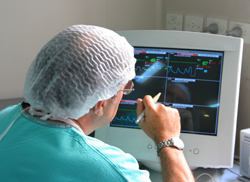Plasma sterilisation of tissue engineering scaffolds
A number of medical procedures, especially bone substitution surgeries could be greatly facilitated from the TISSUE REACTOR project. Project partners have successfully engineered connective tissue in vitro and especially bone tissue and bone tissue constructs. On a polymer scaffold, tissue cells start growing. If the scaffold is three dimensional a three dimensional tissue is produced, as required for bones. Before the beginning of tissue growth, the scaffold of course must be meticulously sterilised. Sterilisation methods usually involve irradiation of the sample under consideration with gamma radiation. Gamma rays consist of high energy photons, capable of not only sterilising the sample, the polymer scaffold, but also of actually damaging it. Illumination of the scaffold with gamma light results in a sterilised scaffold but it degrades much faster and its mechanical strength is compromised. For in vivo applications rates of degradation and mechanical strength are of crucial importance. Another widespread substance used for sterilisation is ethylene oxide, a colourless flammable gas that effectively kills bacteria and fungi. Using this epoxide, TISSUE REACTOR project partners, found that it caused less damage to the polymer scaffolds. The ethylene oxide sterilised scaffolds exhibited slower rates of loss of their mechanical strength. However, some of the scaffolds' key degradable polymers were still damaged and overall scaffold performance was compromised. Sterilisation using plasma, a highly ionised gas, finally provided TISSUE REACTOR project partners with the solution. The plasma afterglow effectively sterilised the polymer sample and caused no noticeable thermal damage. The method can be used to sterilise any porous polymer construct or composite and therefore its field of application will not be restricted solely to medical purposes.



